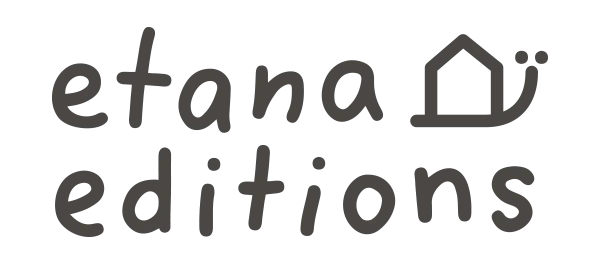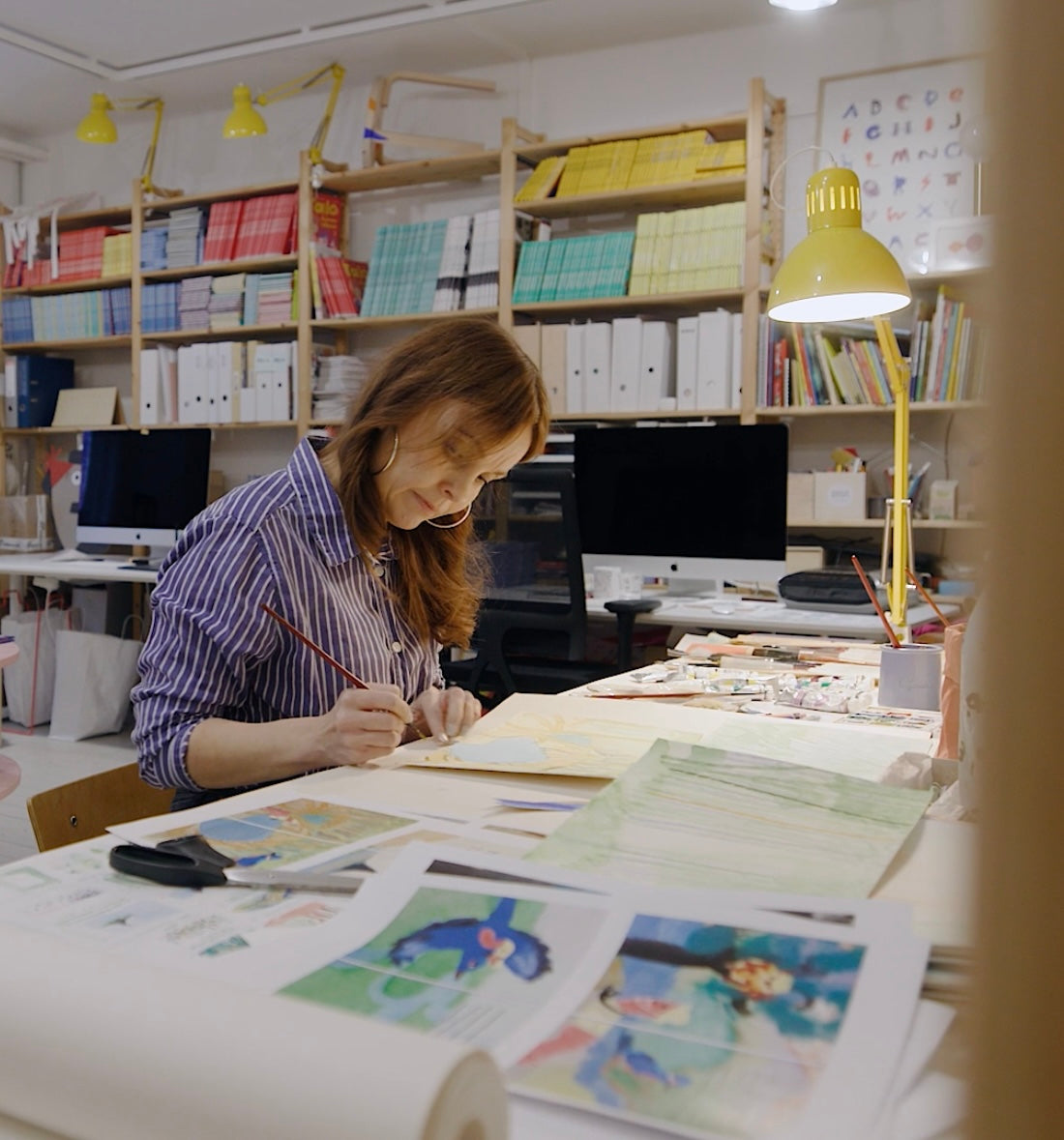Creating a picture book is a long process. The idea can arise many years before the actual creation begins. This is how it also happened with Jenni Erkintalo's book My Little Lovely One.
Erkintalo says that the first idea for the story arose when she heard Esa Saarinen's lecture on the radicalism of babies at a Pafos seminar in 2013, two years after the birth of his own son. The second thing that influenced the book was play.
- When I was little, my father used to play a game with me called Tapu-tapu-pullaa-noin-noin-suuhun-laitetaan. When my own son was a baby, I used to play with him a play we called Who is the lovely one? After the bath I wrapped him in a towel, and when I undressed him, I asked "Who's the lovely one there?", Jenni opens the family games.

Playing hide-and-seek with the baby, the parent responding to the baby's gaze and hearing the baby's laughter as a result, the connection between them is a game that evokes emotions for many. How to transfer physical play into the form of a book? This was a challenge that Erkintalo had been looking for a solution to. The pictures in the book had been in a working process for a long time. Eventually, it became necessary to change the form of expression. In November 2022, Erkintalo traveled to the United States, and under the California sun, she noticed something missing from the pictures.
- Something changed me on that trip, maybe it was the November sun and heat, which I wasn't used to. I remember looking at the Shadow Mountains in California and realizing that I had to expand the horizon and pictorial expression of the book. Until then, the pictures in the book had been taking place indoors, in the baby's micro-world, but now I noticed that the visual narrative in my head began to expand to nature, the urban environment and people. I met a lot of new and unknown people on this trip, who became close and important to me during and after the trip, Jenni says.

In the spring of 2023, Erkintalo started painting large sheets full of brightly colored corals, birds and flowers in a haphazard way. New visual material began to emerge in the sketches of the book.
- I was a bit confused. It took time to digest the trip. I was like a boa that was just digesting and digesting the material. The book was almost finished but I was not satisfied, so I decided to redo it in the summer of 2023.

Erkintalo realized that the image of the landscape in the book became the key image, which created the frame and concept of the entire book. At the beginning of the book, the mother looks at a landscape and out into the world and wonders where her unborn baby is and what the baby will be like. The baby is hidden from the mother, she can only feel the baby, but does not know what to expect.
- At the beginning, the landscape is empty and at the end the landscape is filled with the mother's thoughts and the adventures of the wonderful baby. The baby character of the book is hidden in every opening, like she/he is a gentle thought that appears in the mind of the expectant mother, Jenni describes. At the same time, this refers to the game she played with her own child.
The book offers the reader a multi-layered experience. The young reader and listener can look for the baby on the pages and, together with their parents, reflect on the time when the parents have been waiting for them - it is a journey from a thought through the universe, to the parent's arms.
- My son Valo is the little lovely one in my book. Although I know my son inside and out, the most challenging part was creating the character in the book, Jenni says. The character of the baby went through a transformation until the very last phases of the book, when Erkintalo had received feedback from a foreign publisher. She trusted her instincts, and so the character got new details and more expression.

Erkintalo usually completes the concept and manuscript of the book first.
- After that, I make a storyboard, in which I sketch the first rough drafts of the images. Then I start to complete the pictures one by one. Sometimes just one image can lead the visual expression of the whole book into a another, different direction and if this happens, I have to redo all the book's images.
Erkintalo rewrites the raw text many times. For her, polishing the text is natural and fast compared to making pictures. - I think that the pictures and the text must fit well together, but they also must both deepen the story with their own means of expression.
The result is a unified whole, a picture book which invites readers of all ages to immerse themselves in the story and reach a state of mind where they can dream and open their hearts to waiting for new things.


The first draft of the landscape and the finished illustration.

